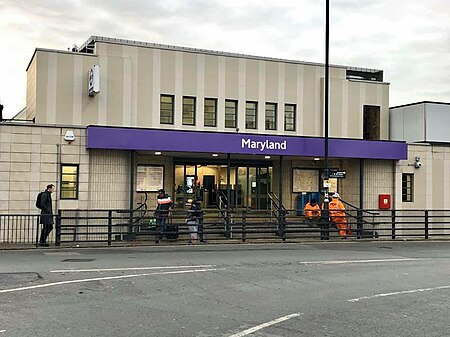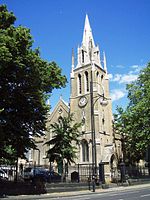Maryland railway station

Maryland railway station is on the Great Eastern Main Line serving the Maryland area of the London Borough of Newham, east London. It is 4 miles 39 chains (7.2 km) down the line from London Liverpool Street and is situated between Stratford and Forest Gate. Its three-letter station code is MYL and it is in fare zone 3. The station was opened in 1873 as Maryland Point by the Great Eastern Railway. It was renamed Maryland in 1940. It is currently managed by Transport for London and is on the Elizabeth line between Shenfield and London Paddington. By May 2023, the Elizabeth line service will be extended beyond Paddington to Reading and Heathrow Airport.
Excerpt from the Wikipedia article Maryland railway station (License: CC BY-SA 3.0, Authors, Images).Maryland railway station
Manbey Park Road, London Maryland (London Borough of Newham)
Geographical coordinates (GPS) Address Nearby Places Show on map
Geographical coordinates (GPS)
| Latitude | Longitude |
|---|---|
| N 51.546 ° | E 0.0059 ° |
Address
Platform 2
Manbey Park Road
E15 1EY London, Maryland (London Borough of Newham)
England, United Kingdom
Open on Google Maps








